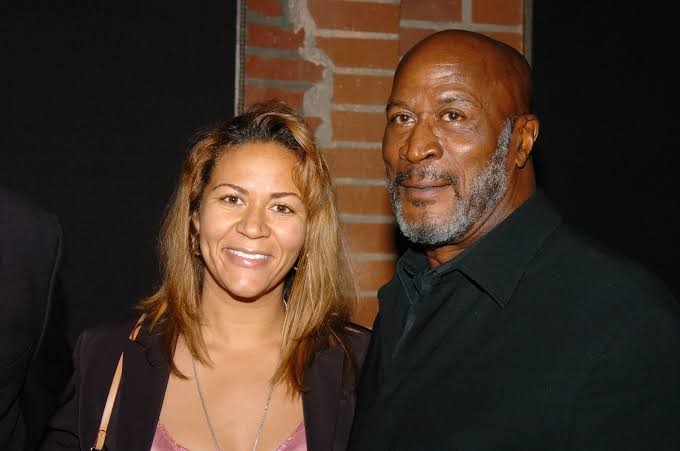Introduction to Noel J. Mickelson
Innovation drives progress, and leadership shapes the path toward it. Few individuals exemplify this dynamic better than Noel J. Mickelson. With a remarkable career dedicated to fostering creativity and guiding teams through change, he has left an indelible mark on various industries.
Mickelson’s approach combines vision with practicality, encouraging others to think outside the box while keeping their feet firmly planted on the ground. His insights into innovation and leadership offer valuable lessons for anyone looking to impact their field significantly.
As we delve into his journey, we’ll uncover what made him successful and how you can apply these principles in your life and organization. Let’s explore how embracing change and cultivating strong leaders can transform your business landscape.
The Importance of Innovation in Business
Innovation is the lifeblood of any thriving business. It drives growth and keeps companies competitive in a fast-paced marketplace.
As industries evolve, consumer needs shift. Businesses that need to adapt avoid being left behind. Embracing innovation allows organizations to stay relevant and meet these changing demands head-on.
Moreover, innovation fosters creativity among teams. Employees who feel empowered to think outside the box contribute unique ideas that can transform products or services. This creative spark often leads to breakthroughs that set a company apart.
Innovative businesses attract top talent. Professionals are drawn to dynamic environments where new ideas flourish. A reputation for innovation creates an appealing workplace culture, enhancing recruitment efforts.
In essence, prioritizing innovation positions businesses not just for survival but for future success as well.
The Role of Leadership in Driving Innovation
Leadership is a critical catalyst for innovation. Influential leaders inspire their teams to think creatively and explore new ideas. They set a vision that encourages experimentation rather than compliance.
A leader’s willingness to embrace ambiguity can foster an environment where innovation thrives. Leaders who model risk-taking empower employees to step outside their comfort zones.
Open communication channels are vital in this process. Leaders who actively listen create safe spaces for sharing bold concepts without fear of failure or criticism.
Moreover, strong leaders understand the importance of collaboration. By uniting diverse talents and perspectives, they drive collective problem-solving, leading to groundbreaking solutions.
Encouraging a learning mindset further enhances innovative capabilities within teams. Leaders who prioritize growth enable individuals to learn from successes and setbacks, paving the way for continuous improvement and creativity.
If you want to read more information, click here.
Lessons from Noel J. Mickelson’s Career in Innovation and Leadership
Noel J. Mickelson’s career is a masterclass in blending innovation with leadership. His approach to problem-solving was never conventional; he thrived on challenging the status quo.
Throughout his journey, Mickelson emphasized the need for adaptability. He understood that businesses must evolve to stay relevant, urging teams to embrace new technologies and methodologies.
Collaboration played a crucial role in his philosophy. He believed diverse perspectives lead to more decadent ideas and robust solutions. By fostering an inclusive environment, Mickelson empowered others to contribute their insights.
Moreover, he placed significant importance on resilience. Setbacks were seen as opportunities rather than failures. This mindset cultivated a culture where experimentation was encouraged, allowing everyone in the organization to learn and grow without fear of repercussions.
His legacy is a reminder that effective leadership paired with innovative thinking can drive remarkable change across industries.
How to Foster a Culture of Innovation in Your Organization
Creating a culture of innovation starts with open communication. Encourage team members to share their ideas without fear of criticism. This openness fosters creativity and collaboration.
Next, provide the right tools and resources. Equip your employees with technology that enhances brainstorming sessions and project development. Access to these resources can spark new concepts.
Recognition is also crucial. Celebrate innovative efforts, no matter how small. Acknowledging contributions boosts morale and inspires others to think outside the box.
Embrace experimentation. Allow teams to test ideas in low-stakes environments. Learning from failures will lead to breakthroughs, reinforcing an innovative mindset throughout your organization.
Real-Life Examples of Companies that Have Successfully Implemented Innovative Strategies
Apple is a prime example of innovation. Its commitment to pushing boundaries has revolutionized technology and consumer experience, from the iPhone to the Apple Watch. Each product launch is meticulously crafted, not just in design but also in user interaction.
Another standout is Amazon. The company transformed retail with its customer-centric approach and technology like AI for personalized shopping experiences. Their logistics innovations have set new standards for delivery speed.
Tesla also deserves mention. They’ve pioneered electric vehicles by challenging traditional automotive norms while emphasizing sustainability. Their direct-to-consumer sales model disrupted conventional dealership practices.
Netflix showcases how adaptability leads to success. Initially a DVD rental service, it evolved into a streaming powerhouse by investing heavily in original content, reshaping how audiences consume entertainment today.
The Importance of Innovation and Leadership
Innovation fuels progress. The engine drives businesses to adapt and grow in a constantly changing environment. Without it, companies risk stagnation. New ideas and fresh approaches are essential for staying competitive.
Leadership plays a crucial role in fostering innovation. Great leaders inspire teams to think outside the box. They create an atmosphere where creativity thrives, encouraging employees to share their thoughts without hesitation.
Influential leaders also understand that innovation requires calculated risks. They support experimentation, knowing failure can be a stepping stone toward success. This mindset empowers teams and cultivates resilience.
Moreover, strong leadership helps align innovative efforts with organizational goals. Creativity becomes more focused and impactful when everyone is on the same page. Innovation and leadership create a powerful synergy that propels organizations into the future.
Critical Lessons from Noel J. Mickelson
Noel J. Mickelson’s journey in leadership and innovation offers valuable insights applicable across various industries. One key lesson is embracing change as a constant in business. Change can be daunting, but it often paves the way for groundbreaking ideas.
Mickelson also emphasizes the importance of taking calculated risks. He believed that without risk, there can be no reward. Leaders should encourage their teams to step outside their comfort zones.
Another crucial takeaway is the need for collaboration. Innovation thrives when diverse minds come together, sharing unique perspectives and skills.
Nurturing talent plays a pivotal role in sustaining innovation within an organization. Investing time in developing leaders creates an environment ripe for creativity and growth.
These lessons reveal how strategic thinking and proactive measures can drive success in any venture.
Embracing Change and Taking Risks
Embracing change is essential in today’s fast-paced world. Businesses that resist it often find themselves left behind. Change can be daunting, but it also opens doors to new opportunities.
Taking risks is an integral part of innovation. It requires courage and a willingness to step out of your comfort zone. Leaders like Noel J. Mickelson understood this well. He championed calculated risk-taking, believing it could lead to remarkable breakthroughs.
Moreover, fostering an environment where team members feel safe to voice their ideas encourages creativity. Innovation flourishes when people know they won’t face harsh repercussions for trying something new.
The key is to view failures as lessons rather than setbacks. Each misstep offers valuable insights that can drive progress forward.
Organizations adapt and thrive in competitive landscapes by embracing change and taking informed risks.
Building a Culture of Innovation
Building a culture of innovation starts with fostering an environment where creativity thrives. Encourage team members to share ideas freely, without fear of judgment or failure.
Support open communication across all levels. This helps break down silos and sparks collaboration. Diverse perspectives lead to more inventive solutions.
Recognize and reward innovative thinking. Celebrate both successes and failures as part of the learning journey. This cultivates resilience in your team.
Provide resources for experimentation, like time for side projects or access to new tools. Empower employees to explore their passions while aligning those pursuits with company goals.
Leadership plays a crucial role in nurturing this culture. Lead by example, demonstrating curiosity and adaptability in your approach to challenges. Leaders’ strong commitment inspires others to embrace change wholeheartedly.
Nurturing and Developing Strong Leaders
Nurturing strong leaders is crucial for any organization looking to innovate and grow. It begins with identifying potential talent within your team. Look for individuals who show initiative, curiosity, and a willingness to learn.
Once you identify these future leaders, please provide them with opportunities to develop their skills. This could involve mentorship programs or dedicated training sessions focused on leadership principles.
Encourage open communication where ideas can flow freely. Strong leaders thrive in environments that welcome diverse perspectives and constructive feedback.
Empower them by assigning challenging projects that push their boundaries. Allowing autonomy fosters creativity and builds confidence.
Recognize achievements, no matter how small. Celebrating successes boosts morale and reinforces the value of effective leadership within your organization.
Conclusion: Applying the Lessons of Noel J. Mickelson in Your Own Life
Applying Noel J. Mickelson’s lessons can significantly impact your personal and professional journey. His insights into innovation and leadership remind us that change is essential for growth. Embracing new ideas, even those that seem daunting initially can lead to breakthroughs in any field.
Fostering a culture of innovation doesn’t have to be complicated. It starts with encouraging open communication and collaboration within teams. Employees who feel valued and heard are likelier to share their creative thoughts.
Nurturing strong leaders is equally vital. Look for opportunities to mentor others in your organization or community. By guiding potential leaders, you strengthen your team and create an environment ripe for innovative thinking.
Keep in mind that taking risks is part of the process. Only some ideas will succeed, but each attempt contributes valuable insights for future endeavors.
By integrating these principles into daily practices, individuals and organizations can achieve lasting success inspired by Noel J. Mickelson’s legacy.
You May Also Like: HD4HUB




